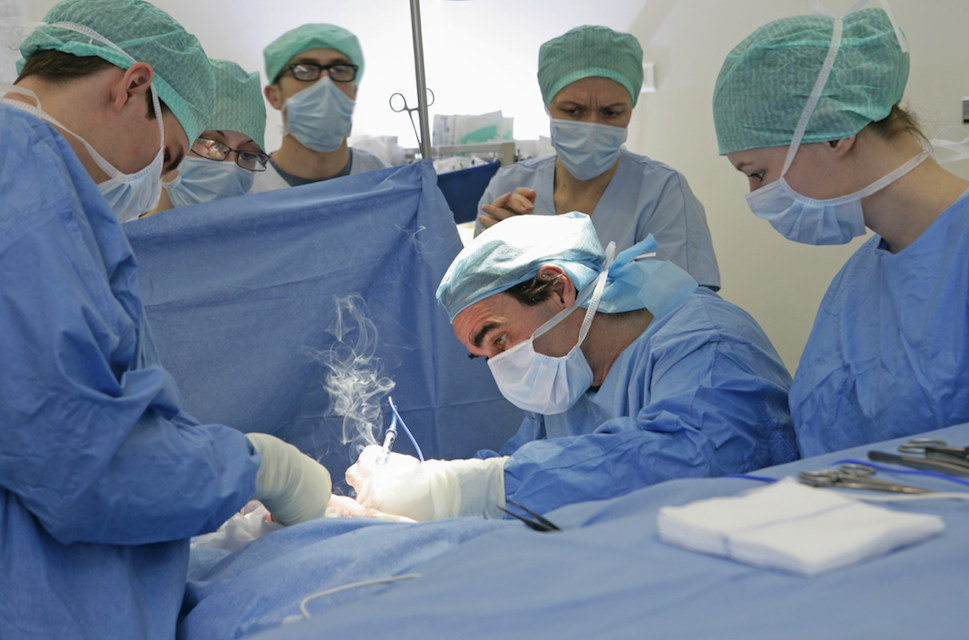What is Orthopedic Oncology?
Orthopedic Oncology is the subdivision of orthopedics that cares for children and adults diagnosed with tumors, and tumor-like condisions of the bone and soft tissue. This includes bone metaseses, sarcomas, benign and cancerous tumors of the bone or soft tissue, and pathologic fracture. A pathologic fracture is a fracture that occurs in the bone due to a disease rather than an injury.

There are several disorders that can occur within bones. Benign (non-cancerous) disorders, cancer that originates in bone, and cancers that have spread to the bones.
Types of Benign Bone Tumors and Treatment Options
Benign bone tumors can be classified into three main types: Chondroblastoma’s, Enchondroma’s, and Giant Cell Tumors. These tumors are not cancerous and some may even go away on their own. The symptoms of benign tumors include pain at the adjacent joint, a viible mass, or swliiing and/or limited movement in the adjacent joint. Treatment will typically consist of observing the tumor, minimally invasive surgery, or surgery.
Chrondroblastoma’s are benign bone tumors that originates in the cartilage cells. Even though they are not
cancerous, they are aggressive. Chondroblastomas are most common in children and adolecents between 10 and 20 years of age.
Enchondroma’s are benign bone tumors that also originate in the cartilage cells. Enchondroma’s typically originate in the hand, humerus, tibia, or femur.
Giant Cell Tumors or GTC’s are benign tumors that grow and rapidly destroy bones. GTC’s are most commonly found near the knee and require surgery due to their aggressive nature. Giant Cell Tumors typically occur in adults between 20 and 40 years of age.
Types of Malignant Bone Tumors and Treatment Options
The next type of bone tumors are Malignant Bone Tumors. Primary malignany bone tumors are cancerous tumors that originate in the bone. Most patients with primary bone cancer can be cured, in fact over 90% of patients can be treated with limb-sparing surgery. Unfortunately the most common cancer involving bones is cancer that spreads from another part of the body such as the breast, lung, or thyroid. This cancer spreading process is called Metastasis.
There are multiple types of malignant tumors. These are Osteosarcoma’s, Ewing’s Sarcoma’s, and Chondrosarcoma’s.
Osteosarcomas are the most common of the malignant bone tumors and develope from osteoblasts. Osteoblasts are the cells that create bone. Osteosarcomas commonly develop during adolescence with an average age of diagnosis of 15.
Ewing’s Sarcoma’s are malignant tumors typically affecting the pelvis or long bones such as in the arms or femur. Children and adolescents between ages 10 and 20 are most commonly impacted. Medicinal advances in surgery and chemotherapy have made this a curable disease and amputations can often be avoided.

Chondrosarcomas originate in the bones and produce abnormal and cancerous cartilage. Often effecting the pelvis, hip, and shoulder, Chondrosarcoma’s are not responsive to chemotherapy. Surgical removal if the favored potential cure of Chondrosarcomas.
Types of Benign Soft Tissue Tumors and Treatment Options
Most benign soft tissue tumors are painless. They occur in soft tissues such as muscles, ligaments, nerves,
and blood vessels.
Treatment options consist of observation or surgery, but in some cases the tumor may even go away on its own. Although not cancerous, some benign soft tissue tumors are aggressive and must be dealt with promptly before invading nearby tissues.
Types of Malignant Soft Tissue Tumors and Treatment Options
Sarcomas are malignant soft tissue tumors that can be found in fat, muscles, tendons, nerves, blood vessels, synovial tissue, or other fibrous tissue. Patients with malignant soft tissue sarcomas typically do not show any symptoms. These tumors can metastasize and spread to other parts of the body so it is important to receive annual checkups where these may be diagnoses. In order to diagnose malignant soft tissue tumors, an orthopedic oncologist will use diagnostic imagine such as MRI, X Ray, Bone scan, PET scan, or CT. The orthopedic oncologist may also desire a biopsy of the tumor.
Surgery is the primary treatment method. An orthopedic oncologist will remove the entirety of the tumor and surrounding tissue that could have potentially been compromised by the tumor. Chemotherapy may not be advised for malignant soft tissue sarcomas.

